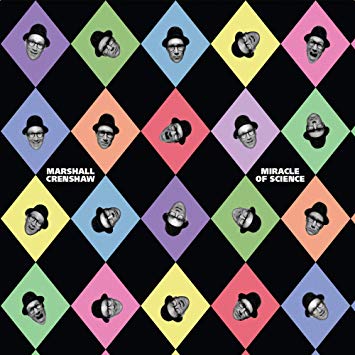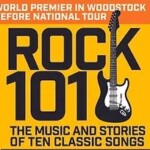Artist: Marshall Crenshaw
Album: Miracle of Science
Label: Shiny-Tone
Release Date: 1.17.20

Going under the hood, Marshall Crenshaw made a few small repairs to 1996’s Miracle of Science. The first of five well-regarded records the bespectacled power-pop wizard released for the Razor & Tie imprint, with ownership of them now having reverted back to Crenshaw, the re-released Miracle of Science is again street legal and ready to drive off the lot, kicking off a reissue campaign that will reintroduce the entire output into the congested traffic of today’s music industry. The whole fleet includes 1999’s #447 and 2003’s What’s in the Bag? Both studio LPs will be joined by the 1994 live effort My Truck is My Home and 1998’s early demos set The 9 Volt Years, all of them augmented with two newly-recorded, previously unavailable bonus tracks as Crackerjack prizes for all formats.
Selling delightful stylistic curiosities, such as the smooth countrypolitan instrumental “Theme from ‘Flaregun,’” the freewheeling Miracle of Science occasionally gets unruly, but it’s also full of flowing, cinematic wonders and unexpectedly diverse covers. “There’s a lot of spirit in the music, a lot of fire,” Crenshaw’s been quoted as saying, while also explaining, “The playing is loose and wild—a much different approach from what you hear on my major-label records, and a real breakthrough, for my money.” That’s certainly true of the LP’s red-hot version of Hy Heath’s “Who Stole That Train,” a twangy, rambunctious rockabilly inferno that cannot be contained, and there’s a folky snap, crackle and pop to “What Do You Dream Of?” that whisks the song’s yearning melancholy out of therapy and into a night of possibilities.
If his biggest hit “Someday, Someway” made Crenshaw out to be the second coming of Buddy Holly, revealing his fondness for ‘50s-inspired jangle-pop, then Miracle of Science suggests a kinship to Roy Orbison, even if he doesn’t soar quite as high. The sighing, rapturous “Starless Summer Sky,” with its wide-eyed, unabashed romanticism, washes over its smiling acolytes like a mass baptism, while Crenshaw’s version of Bill Giant and Jeff Lewis’ “A Wondrous Place” is bohemian and exotic, with its eddying vibraphone and rolling bongos. That exhilarating feeling of liberation Crenshaw must have experienced leaving the major-label world behind is palpable, as his breezy, autumnal folk-rock cover of Grant Hart’s “Twenty-Five Forty One” rushes by and the sly dobro curls, handclaps and halting swagger of his rootsy remake of the ‘60s R&B smash “The ‘In’ Crowd” smirk sarcastically at anyone who dares to question why it’s here.
One of the tracks Crenshaw tinkered with is the dark and velvety “Only an Hour Ago,” a stylish bouquet of sweeping, melodic richness presented to lovers of his work with stronger definition, a troubled heart and a nervous pace that has the wind at its back. With its skies a bit overcast, the bittersweet ballad “There and Back Again,” with its carefree strumming leading to clever lead guitar embroidery near the finish, was rehabilitated in similar fashion, like an old, weathered house with good bones. Some of the sonic paint is peeling off, but that only adds to its charms. As extras, Crenshaw offers the exhaling and exhausted longing of “Seven Miles an Hour,” plus a slow, dripping reading of Scottish indie-pop veteran Daniel Wylie’s “Misty Dreamer” that’s surprisingly luxurious and intoxicating and a smart country-folk rendering of “What the Hell I Got,” a 1974 Canadian hit for Michel Pagliaro, that’s exceedingly likeable and grounded in solid pop values, just like Crenshaw himself.
—Peter Lindblad







Be the first to comment!